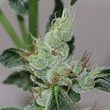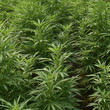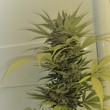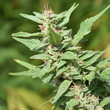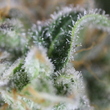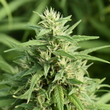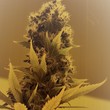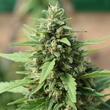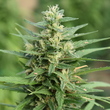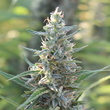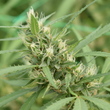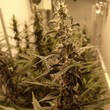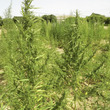Introduction
The elucidation of Cannabis composition is essential to assess its potential for pharmacological use, as well as for implementation in breeding programs with agronomical purposes. In the last years, different analytical platforms have been used to this end, including gas chromatography with flame ionization detector and mass spectrometry
Material and méthods
Cannabis samples from 17 cultivars of Cannabis plants were selected, including varieties registered by Phytoplant Research in the Community Plant Variety Office (CPVO), namely: Aida, Beatriz, Divina, Juani, Magda, Mati, Moniek, Octavia, Pilar, Sara and Theresa. Different cultivar conditions were evaluated, including indoor, greenhouse and field. Additionally, some other genotypes and hybrids were analyzed. A comparative study of different varieties, Theresa, Pilar, Aida and Juani, grown in field and in greenhouse cultivation was carried out.
Dried and grounded Cannabis samples were processed with solvent of different polarity and analyzed by LC-QTOF MS/MS and GC-TOF/MS. Untargeted identification of the vegetal material was accomplished using specialized databases.
Results
Polar extracts of Cannabis were analyzed by LC-QTOF MS/MS while non polar extracts were characterized by GC-TOF/MS. Tentative identification of molecular features (MFs) was carried out using MS and MS/MS data, resulting in a total of 169 compounds including terpenoids, cannabinoids, lipids, benzenoids, hydrocarbons, flavonoids and amino acids, among others compounds. In addition, the comparative study of Cannabis plants grown at four different cultivars demonstrated the influence of the crop type in many biochemical processes, including those involved in the formation of cannabinoids and terpenoids. Thereby, variations in the cannabinoid and terpenoid content were observed in this study.
Discusion
The untargeted metabolomics analysis of polar and non-polar extracts from twenty-three Cannabis cultivars was carried out by two analytical platforms, GC–TOF/MS and LC–QTOF MS/MS, which allowed the identification of 169 compounds. Forty-six compounds were identified in polar extracts and 134 compounds in non-polar extracts, including cannabinoids, terpenoids, lipids and flavonoids, but also some interesting compounds such as amino and organic acids, among others. Although compositional differences were found in the profile of terpenoids and cannabinoids between extracts of plants cultivated in field and greenhouse, further studies must be accomplished including a greater number of cultivars to reach to a final conclusion. In this sense, the cultivation of a selected variety could be modified according to the production purposes.
Other publications
See more
See more
See more
See more
See more
See more
See more
See more
See more
See more
See more
See more
See more
See more
See more
See more
See more
See more
See more
See more
See more
See more
See more
See more
See more
Ask for information
Can we be of help to you? Do you have any questions about us? Write to us and we will contact you as soon as possible.
